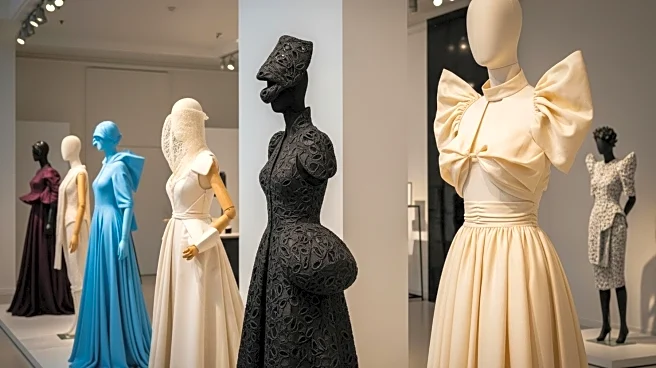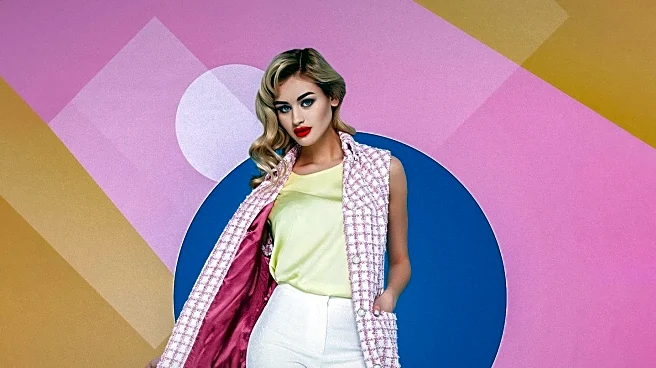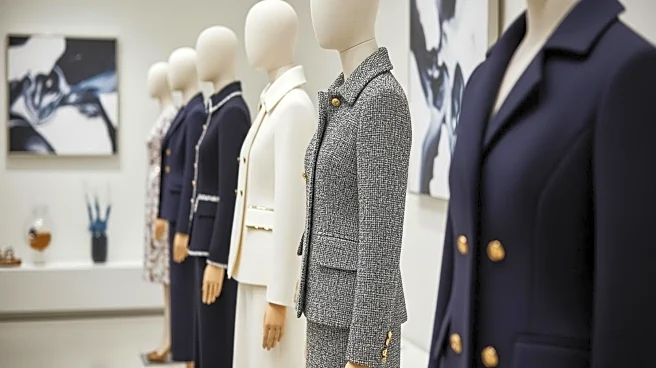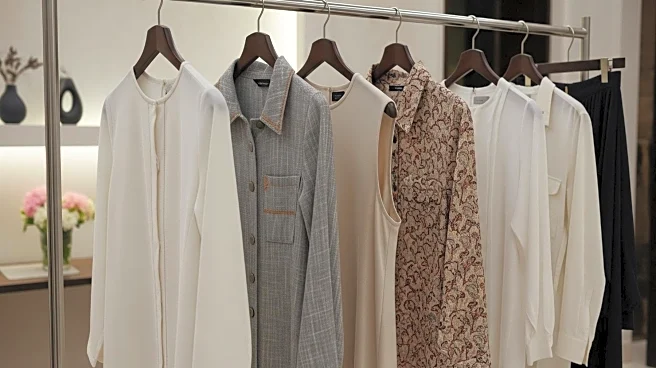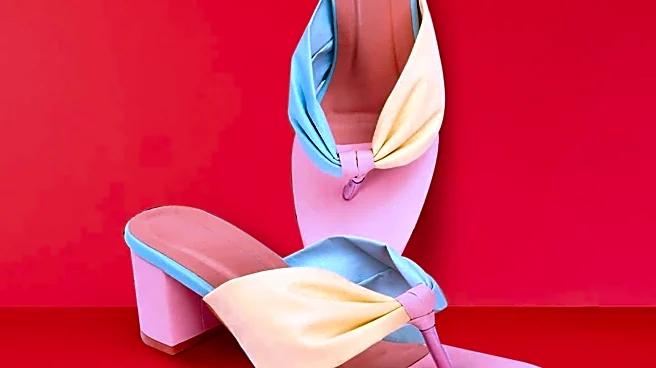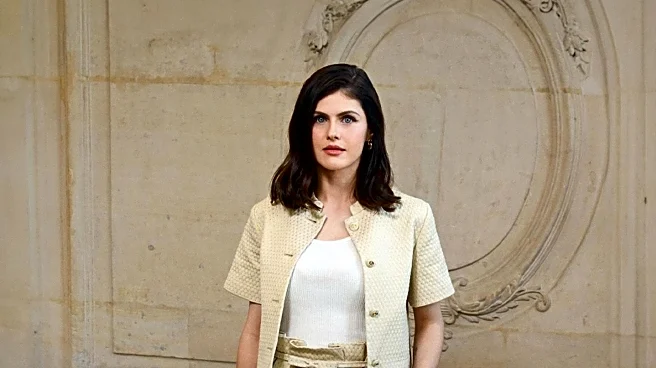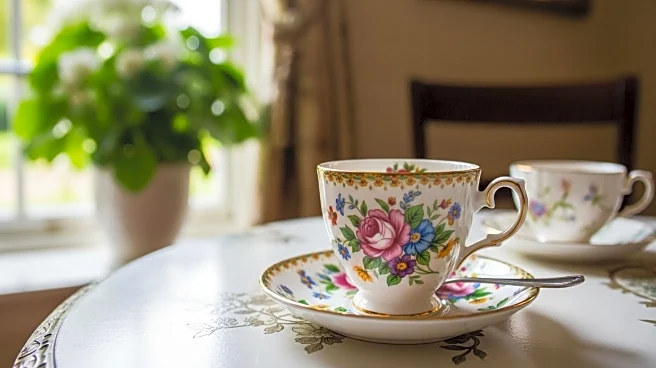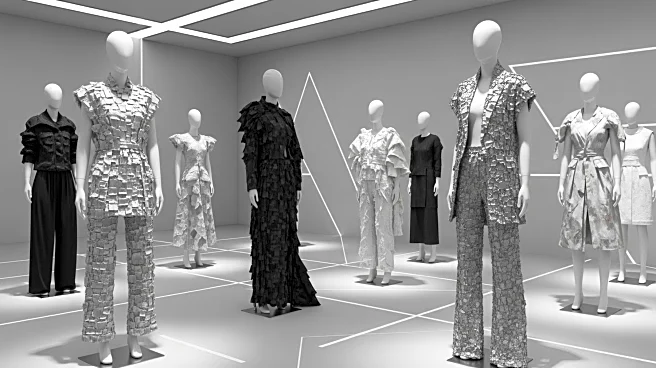What's Happening?
Matières Fécales, led by designers Steven Raj Bhaskaran and Hannah Rose Dalton, presented their Spring 2026 Ready-to-Wear collection at Place Vendôme. The show featured unconventional designs that subvert traditional couture standards, including riffs on Dior's Bar jacket and frayed Chanel-like tweed. The collection was marked by bold expressions of individuality, with Barbie pink accents symbolizing a critique of conventional beauty standards. The event attracted a diverse audience committed to unorthodox fashion, fostering a supportive atmosphere. Notable moments included model Nikki Lilly, who confidently showcased a tulle skirted gown despite her craniofacial condition, highlighting the collection's embrace of physical differences.
Why It's Important?
The Matières Fécales Spring 2026 collection challenges societal norms around beauty and fashion, promoting inclusivity and diversity. By showcasing designs that defy traditional standards, the collection encourages acceptance of individuality and physical differences. This approach resonates with broader cultural movements advocating for representation and diversity in fashion. The collection's impact extends beyond aesthetics, potentially influencing industry trends towards more inclusive practices. It also highlights the role of fashion as a platform for social commentary, using design to address issues of intolerance and acceptance.
What's Next?
The collection's reception may inspire other designers to explore unconventional themes and challenge beauty norms. As the fashion industry continues to evolve, there may be increased demand for inclusive and diverse representations in runway shows and marketing campaigns. Stakeholders, including fashion brands and media, might respond by prioritizing diversity and inclusivity in their strategies. The collection could also spark discussions on the role of fashion in societal change, encouraging further exploration of how design can address social issues.
Beyond the Headlines
The Matières Fécales collection raises questions about the ethical responsibilities of the fashion industry in promoting diversity and challenging stereotypes. It underscores the importance of representation and the power of fashion to influence cultural perceptions. The collection's embrace of physical differences and individuality may contribute to long-term shifts in industry standards, encouraging more inclusive practices. Additionally, it highlights the potential for fashion to serve as a catalyst for broader societal change, using design as a tool for advocacy and empowerment.

